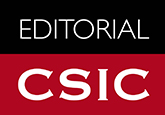Caracterización citogenética molecular de algunos representantes de los subgéneros Artemisia y Absinthium (género Artemisia, Asteraceae)
DOI:
https://doi.org/10.3989/collectbot.2008.v27.2Palabras clave:
Artemisia, Asteraceae, colocalización, hibridación fluorescente in situ, bandeo cromosómico, análisis de cariotipoResumen
Se ha llevado a cabo un estudio citogenético molecular en tres especies del género Artemisia, que complementa trabajos previos sobre dos subgéneros que han sido poco estudiados desde este punto de vista, Artemisia (A. chamaemelifolia, A. vulgaris) y Absinthium (A. absinthium). Se han efectuado tinciones de bandeo con cromomicina A3 y con 4',6-diamidino-2-fenilindol (DAPI), así como hibridación in situ fluorescente (FISH) del ADN ribosómico 5S y 18S-5.8S-26S. Se han calculado los datos morfométricos relativos a los caracteres del cariotipo y se han construido los idiogramas con indicación de la posición de las regiones ricas en AT y GC y los loci del ADNr. Se ha observado la colocalización de la mayoría de estas regiones; tal como se había mencionado en otros estudios sorbe el género, ambos ADN ribosómicos aparecen siempre colocalizados, lo que constituye un rasgo distintivo con respecto de la mayor parte de angiospermas. En cuanto a las características diferenciales de cada especie, A. absinthium muestra cromosomas largos, un cariotipo simétrico y carece de bandas centroméricas, que, por el contrario, aparecen en A. chamaemelifolia y A. vulgaris. La última especie presenta, además, cromosomas B en los que se ha detectado ADN ribosómico y heterocromatina. A pesar de estas diferencias, la morfología del cariotipo y el modelo de bandas de las tres especies son muy similares. Esto puede reflejar una relación filogenética estrecha entre ambos subgéneros, lo que es coherente con las filogenias moleculares hasta ahora publicadas para el género, que presentan mezcladas especies de los subgéneros Artemisia y Absinthium.
Descargas
Citas
Abd El-Twab, M. H. & K. Kondo (2006). FISH physical mapping of 5S, 45S and Arabidopsis type telomere sequence repeats in Chrysanthemum zawadskii showing intra-chromosomal variation and complexity in nature. Chrom. Bot. 1: 1-5. doi:10.3199/iscb.1.1
Ansari, H. A., N. W. Ellison, M. S. Reader, E. D. Badaeva, B. Friebe, T. E. Miller & W. M. Williams (1999). Molecular cytogenetic organization of 5S and 18S-26S rDNA loci in the white clover (Trifolium repens L.). Am. J. Bot. 83: 199-206.
Bennett, M. D. & I. J. Leitch (2005). Nuclear DNA Amounts in Angiosperms: Progress, Problems and Prospects. Ann. Bot. (London) 95: 45-90. doi:10.1093/aob/mci003
Bremer, K & C. J. Humphries (1993). Generic monograph of the Asteraceae-Anthemideae. Bull. Nat. Hist. Mus. Lon. (Bot.) 23: 71-177.
Cerbah, M., J. Coulaud, B. Godelle & S. Siljakyakovlev (1995). Genome size, fluorochrome banding and karyotype evolution in some Hypochaeris species. Genome 38: 689-695. doi:10.1139/g95-087
Cuadrado, A. & N. Jouve (1994). Highly repetitive sequences in B chromosomes of Secale cereale revealed by fluorescent in situ hybridization. Genome 37: 709-712. doi:10.1139/g94-100
Drouin, G. & M. Moniz De Sa (1995). The concerted evolution of 5S ribosmal genes linked to the repeat units of other multigene families. Molec. Biol. Evol. 12: 481-493.
Ehrendorfer, F. (1964). Notizen zur Cytotaxonomie und Evolution der Gattung Artemisia. Oesterr. Bot. Zeitschr. 111: 84-142. doi:10.1007/BF01373322
Garcia, S., M. Sanz, T. Garnatje, A. Kreitschitz, D. E. Mcarthur & J. Vallès (2004). Variation of DNA amount in 47 populations of the subtribe Artemisiinae and related taxa (Asteraceae, Anthemideae): karyological, ecological, and systematic implications. Genome 47: 1004-1014. doi:10.1139/g04-061
Garcia, S., T. Garnatje, SH. Dariimaa, SH. Tsooj & J. Vallès (2006). New or rarely reported chromosome counts (Anthemideae, Asteraceae) from Mongolia. Bot. J. Linn. Soc. 150: 203-210. doi:10.1111/j.1095-8339.2006.00465.x
Garcia, S., T. Garnatje, O. Hidalgo, E. D. Mcarthur, S. Siljak-Yakovlev & J. Vallès (2007). Extensive ribosomal DNA (18S-5.8S-26S and 5S) colocalization in the North American endemic sagebrushes (subgenus Tridentatae, Artemisia, Asteraceae) revealed by FISH. Pl. Syst. Evol. 267: 79-92. doi:10.1007/s00606-007-0558-6
Geber, G. & D. Schweizer (1987). Cytochemical heterochromatin differentiation in Sinapis alba (Cruciferae) using a simple air drying technique for producing chromosome spreads. Pl. Syst. Evol. 158: 98-106. doi:10.1007/BF00936336
Green, D. M (1988). Cytogenetics of the endemic New Zealand frog, Leiopelma hochstteri: extraordinary supernumerary chromosome variation and unique sex-chromosome system. Chromosoma 97: 55-70. doi:10.1007/BF00331795
Hoshi, Y., K. Kondo, A. A. Korobkov, I. V. Tatarenko, P. V. Kulikov, V. P. Verkholat, A. Gontcharov, H. Ogura, T. Funamoto, G. Kokubugata, R. Suzuki & H. Matoba (2003). Cytological study in the genus Artemisia L. from Russia. Chrom. Sci. 7: 83-89.
Hoshi, Y., H. Matoba & K. Kondo (2006). Physical mapping of ribosomal RNA genes in the genus Artemisia L. (Asteraceae). Caryologia 59 (4): 312-318.
James, C. M., B. S. Wurzell & C. A. Stace (2000). A new hybrid between a European and a Chinese species of Artemisia (Asteraceae). Watsonia 23: 139-147.
Jones, R. N. & H. Rees (1982). B Chromosomes. Academic Press, London. 266 pp.
Kornkven, A. B, L. Watson & J. Estes (1998). Phylogenetic analysis of Artemisia section Tridentatae (Asteraceae) based on sequences from the internal transcribed spacers (ITS) of nuclear ribosomal DNA. Am. J. Bot. 85: 1787-1795. doi:10.2307/2446513
Korobkov, A. A. (1972). K tsitotaksonomicheskoi kharakteristike nekotorikh vidov roda Artemisia L. severo-vostoka SSSR. Bot. Zh. 57: 1316-1327.
Kubitzki. K. (2007). Eudicots. Asterales. In: KADEREIT, J. W. & C. JEFFREY (Eds.), The families and genera of vascular plants. Vol. VIII Flowering plants. Springer-Verlag Berlin Heidelberg. 635 pp.
Leitch, I. J. & J. S. Heslop-Harrison (1993). Physical mapping of the 18S-5.8S-26S rRNA genes in barley by in situ hybridization. Genome 35: 1013-1018.
Levan, A., K. Fredga & A. A. Sandberg (1964). Nomenclature for centromeric position on chromosomes. Hereditas 52: 201-220.
Ling, Y. R. (1991a). The Old World Seriphidium (Compositae). Bull. Bot. Res. 11: 1-40.
Ling, Y. R (1991b). The Old World Artemisia (Compositae) . Bull. Bot. Res. 12: 1-108.
Ling, Y. R. (1995a). The New World Artemisia L. In: Hind D. J. N., C. Jeffrey, G. V. Pope (Eds.), Advances in Compositae Systematics. Kew, Royal Botanic Gardens: 255-281.
Ling, Y. R. (1995b). The Old World Seriphidium (Besser) Fourr. In: Advances in Compositae Systematics. In: Hind D. J. N., C. Jeffrey, G. V. Pope (Eds.), Advances in Compositae Systematics. Kew, Royal Botanic Gardens: 283-291.
Mabberley, D. J. (1990). The plant book. Cambridge University Press, Cambridge, U. K. 707 pp.
Mcarthur, E. D. (1979). Sagebrush systematics and evolution. In Sagebrush Ecosystem Symposium, April 1978, Utah State University, Logan, Utah: 14-22.
Mcarthur, E. D. & C. S. Sanderson (1999). Cytogeography and chromosome evolution of subgenus Tridentatae of Artemisia (Asteraceae). Am. J. Bot. 86: 1754-1775. doi:10.2307/2656673
Oliva, M. & J. Vallès (1994). Karyological studies in some taxa of the genus Artemisia (Asteraceae). Can. J. Bot. 72: 1126-1135.
Pellicer J., S. Garcia, T. Garnatje, O. Hidalgo, A. A. Korobkov, SH. Dariimaa & J. Vallès (2007). Chromosome counts in Asian Artemisia L. (Asteraceae) species: from diploids to the first report of the highest polyploid in the genus. Bot. J. Linn. Soc. 153: 301-310. doi:10.1111/j.1095-8339.2007.00611.x
Persson, K. (1974). Biosystematic studies in the Artemisia maritima complex in Europe. Opera Bot. 35: 1-188.
Raina, S. N., Y. Mukai, K. Kawaguchi, S. Goel & A. Jain (2001). Physical mapping of 18S-5.8S-26S and 5S ribosomal RNA gene families in three important vetches (Vicia species) and their allied taxa constituting three species complexes. Theor. Appl. Genet. 103: 839-845. doi:10.1007/s001220100706
ROMERO, C. (1986). A new method for estimating karyotype asymmetry. Taxon 35: 526-530. doi:10.2307/1221906
Sanz, M., R. Vilatersana, O. Hidalgo, N. Garciajacas, A. Susanna, G. M. Schneeweiss & J. Vallès (2008). Molecular Phylogeny and evolution of floral characters of Artemisia and allies (Anhtemideae, Asteraceae): evidence from nrDNA ETS and ITS sequences. Taxon 57 (1): 1-13.
Schweizer, D. (1976). Reverse fluorescent chromosome banding with chromomycin and DAPI. Chromosoma 58: 307-324. doi:10.1007/BF00292840
Schweizer D & F. Ehrendorfer (1983). Evolution of C-band patterns in Asteraceae-Anthemideae. Biol. Zentralbl. 102: 637-655.
Singh, R. J., H. H. Kim & T. Hymowitz (2001). Distribution of rDNA loci in the genus Glycine Willd. Theor. Appl. Genet. 103: 212-218. doi:10.1007/s001220100591
Solbrig, O. T. (1977). Chromosomal cytology and evolution in the family Compositae. In: Heywood, V. H., J. B. Harborne & B. L. Turner (Eds.), The biology and chemistry of the Compositae, Vol. I. Academic Press, London, New York, San Francisco: 269-281.
Srivastava, A. K. & D. Schlessinger (1991). Structure and organization of ribosomal DNA. Biochimie 73: 679-685. doi:10.1016/0300-9084(91)90042-Y
Stebbins, G. L. (1971). Chromosomal evolution in higher plants. E. Arnold Publ., London. 216 pp.
Torrell, M., N. Garcia-Jacas, A. Susanna & J. Vallès (1999). Phylogeny in Artemisia (Asteraceae, Anthemideae) inferred from nuclear ribosomal DNA (ITS) sequences. Taxon 48: 721-736. doi:10.2307/1223643
Torrell, M., M. Cerbah, S. Siljak-Yakovlev & J. Vallès (2001). Etude cytogénétique de trois taxons du complexe Artemisia campestris L. (Asteraceae, Anthemideae) : localisation de l’hétérochromatine et de l’ADN ribosomique. Bocconea 13: 623-628.
Torrell, M., M. Cerbah, S. Siljak-Yakovlev & J. Vallès (2003). Molecular cytogenetics of the genus Artemisia (Asteraceae, Anthemideae): fluorochrome banding and fluorescent in situ hybridization. I. Subgenus Seriphidium and related taxa. Plant Syst. Evol. 239: 141-153. doi:10.1007/s00606-002-0259-0
Trivers, R., A. Burt & B. G. Palestis (2004). Bchromosomes and genome size in flowering plants. Genome 47: 1-8. doi:10.1139/g03-088
Vallès, J. & T. Garnatje (2005). Artemisia and its allies: genome organization and evolution and their biosystematic, taxonomic and phylogenetic implications in the Artemisiinae and related subtribes (Asteraceae, Anthemideae). In: SHARMA, A. K & A. Sharma (Eds.), Plant genome: biodiversity and evolution 1(B). Science Publishers Inc., Enfield, U.S.A. pp 255-285.
Vallès, J., T. Garnatje, S. Garcia, M. Sanz & A. A. Korobkov (2005). Chromosome numbers in several taxa of the tribes Anthemideae and Inuleae (Asteraceae). Bot. J. Linn. Soc. 148: 77-85. doi:10.1111/j.1095-8339.2005.00390.x
Vallès, J. & S. Siljak-Yakovlev (1997). Cytogenetic studies in the genus Artemisia L.: fluorochrome banded karyotypes of five taxa, including the Iberian endemic species A. barrelieri Besser. Can. J. Bot. 75: 595-606.
Vallès, J., M. Torrell & N. Garcia-Jacas (2001). New or rare chromosome counts in Artemisia L. (Asteraceae, Anthemideae) and related genera from Kazakhstan. Bot. J. Linn. Soc. 137: 399-407. doi:10.1006/bojl.2001.0492
Vallès, J., M. Torrell, T. Garnatje, N. Garcia-Jacas, R. Vilatersana & A. Susanna (2003). The genus Artemisia and its allies: phylogeny of the subtribe Artemisiinae (Asteraceae, Anthemideae) based on nucleotide sequences of nuclear ribosomal DNA internal transcribed spacers (ITS). Pl. Biol. 5: 274-284. doi:10.1055/s-2003-40790
Vischi, M., I. Jurman, G. Bianchi & M. Morgante (2003). Karyotype of Norway spruce by multicolour FISH. Theor. Appl. Genet. 107 : 591-597. doi:10.1007/s00122-003-1306-0
Watson, L. E., P. L. Bates, T. M. Evans, M. M. Unwin & J. R. Estes (2002). Molecular phylogeny of subtribe Artemisiinae (Asteraceae), including Artemisia and its allied and segregate genera. BMC Evol. Biol. 2: 17. doi:10.1186/1471-2148-2-17
Weinedel-Liebau, F. (1928). Zytologische Untersuchungen an Artemisia-Arten. Jahrb. Wiss. Bot. 69: 636-686.
Descargas
Publicado
Cómo citar
Número
Sección
Licencia
Derechos de autor 2008 Consejo Superior de Investigaciones Científicas (CSIC)

Esta obra está bajo una licencia internacional Creative Commons Atribución 4.0.
© CSIC. Los originales publicados en las ediciones impresa y electrónica de esta Revista son propiedad del Consejo Superior de Investigaciones Científicas, siendo necesario citar la procedencia en cualquier reproducción parcial o total.Salvo indicación contraria, todos los contenidos de la edición electrónica se distribuyen bajo una licencia de uso y distribución “Creative Commons Reconocimiento 4.0 Internacional ” (CC BY 4.0). Puede consultar desde aquí la versión informativa y el texto legal de la licencia. Esta circunstancia ha de hacerse constar expresamente de esta forma cuando sea necesario.
No se autoriza el depósito en repositorios, páginas web personales o similares de cualquier otra versión distinta a la publicada por el editor.














